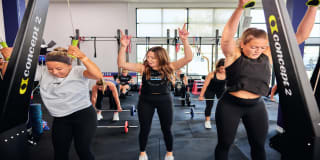
Title: Empowering Gains: Exploring Strength Training Schools in the Philippines
Introduction:
Welcome to “Empowering Gains,” where we embark on a journey to explore the realm of strength training schools in the Philippines. These institutions offer a wealth of knowledge, resources, and opportunities for individuals passionate about building strength, improving fitness, and pursuing careers in the fitness industry. Join us as we delve into the educational landscape, uncovering the diverse array of programs, certifications, and experiences available to empower individuals on their fitness journey.
-
The Role of Strength Training Schools:
- Define the role of strength training schools in providing comprehensive education and training in various aspects of strength and conditioning.
- Highlight the importance of accredited institutions that offer quality programs, experienced instructors, and hands-on learning experiences.
-
Types of Programs Offered:
- Explore the different types of programs offered by strength training schools in the Philippines, including certificate courses, diploma programs, and degree tracks.
- Discuss the focus areas of these programs, such as personal training, strength and conditioning coaching, sports performance, and exercise science.
-
Curriculum and Course Structure:
- Examine the curriculum and course structure of strength training programs, including core courses, elective options, practical training components, and internship opportunities.
- Highlight the integration of theoretical knowledge with practical application, ensuring students develop a comprehensive understanding of strength training principles and methodologies.
-
Accreditation and Certification:
- Discuss the importance of accreditation and certification for strength training schools, ensuring that programs meet established standards of quality and excellence.
- Explore the various accrediting bodies and certifications recognized within the fitness industry, such as the National Strength and Conditioning Association (NSCA), American College of Sports Medicine (ACSM), and International Sports Sciences Association (ISSA).
-
Faculty and Instructors:
- Highlight the qualifications and expertise of faculty members and instructors at strength training schools, including academic credentials, professional experience, and industry certifications.
- Showcase testimonials and success stories from students who have benefited from the guidance and mentorship of knowledgeable instructors.
-
Alumni Success and Career Opportunities:
- Explore the success stories of alumni from strength training schools, highlighting their career paths, achievements, and contributions to the fitness industry.
- Discuss the diverse career opportunities available to graduates, including personal training, strength coaching, sports performance enhancement, corporate wellness, and fitness entrepreneurship.
Conclusion:
“Empowering Gains” has provided a comprehensive overview of strength training schools in the Philippines, showcasing the educational opportunities and career pathways available to fitness enthusiasts and aspiring professionals. Whether you’re looking to deepen your knowledge, enhance your skills, or pursue a rewarding career in the fitness industry, these institutions offer the resources, expertise, and support needed to achieve your goals. Empower yourself with education, training, and experiences that will propel you towards success in the dynamic and evolving field of strength training.
No Comments Yet